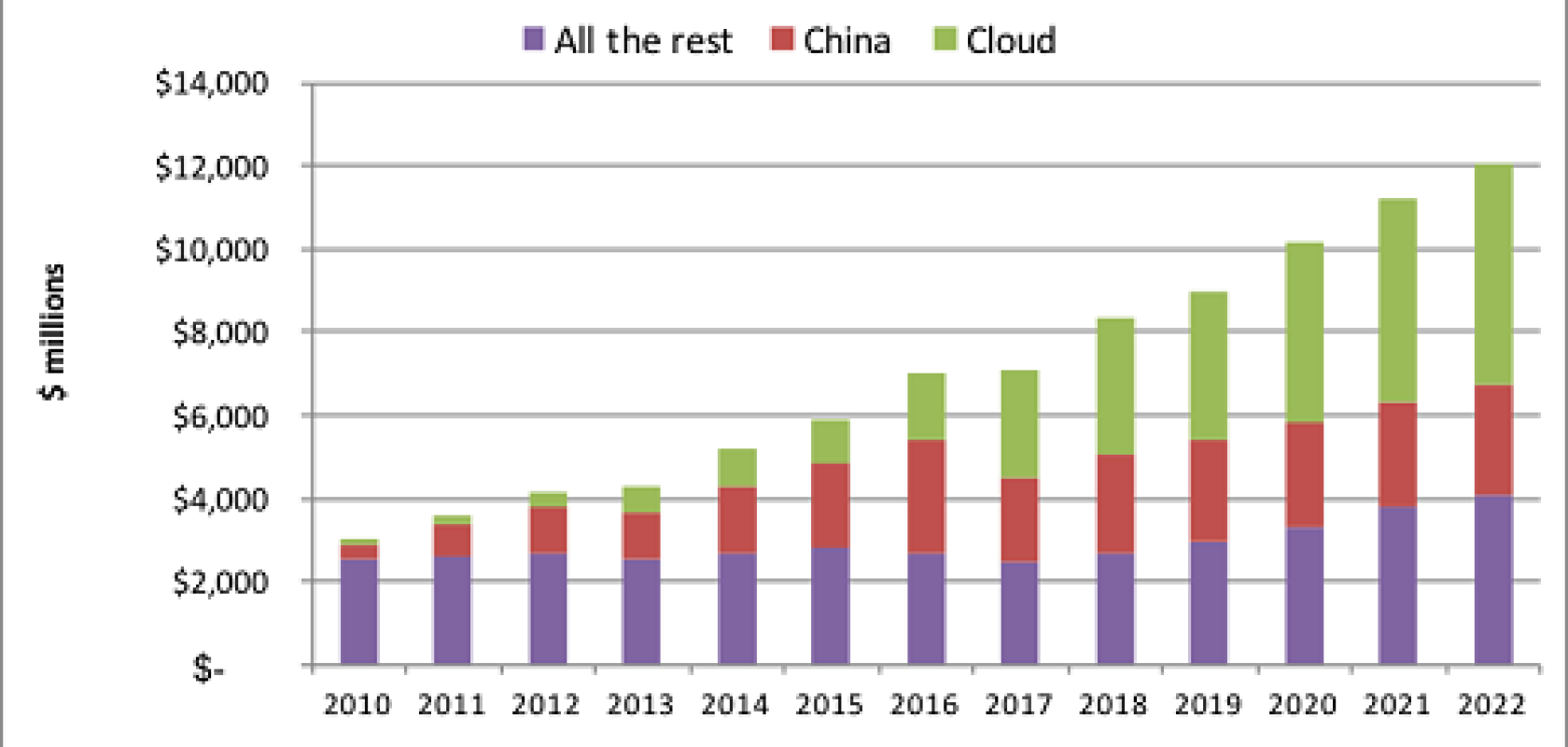Lower than anticipated demand from the telecom segment has interrupted the steady growth that the optical components market has enjoyed in recent years, according to market research firm LightCounting in the semi-annual update to its Optical Components Market Forecast.
“Based on first half 2017 shipment data, and subsequent talks with clients and other vendors, we expect that the global market for optical components and modules will be flat in 2017, after a seven-year period of steady growth in 2010-2016,” observed Vladimir Kozlov, founder and CEO, LightCounting. “Optical transceiver sales will be up 3 per cent, but declining sales of coherent receivers, modulators, tunable lasers and [wavelength selective switch] WSS modules will erase growth in the total market.”
The fundamental market drivers remain in place, however; and the longer-term outlook is still positive, the market research firm said.
Operator capex is expected to decline four per cent in 2017 to $170 billion, as Chinese service providers held back on wireless infrastructure deployment. Deployment of optical networking equipment in China increased in 2017, however, repeating the pattern observed in 2016. Optical networking gear accounts for only 10 per cent of capex on average, so spending on optics can increase even as total capex declines, LightCounting observed.
In contrast, the leading internet content providers (ICPs) increased spending by 15 per cent in the first half of 2017; and are expected to set a new capex record this year. However, their continued growth is not sufficient to offset the decline in carrier capex, as their collective ICP spend remains several times smaller than the top 15 service providers.
Ethernet optics accounts for significant fraction of cloud company spend. LightCounting estimates that Amazon, Apple, Google, and Facebook combined will spend almost $1.1 billion on Ethernet transceivers in 2017, while the rest of the ICP segment will account for another $790 million in sales. Recognising how much they spend on optics, cloud providers are pushing suppliers to reduce costs at a rate not seen in the telecom market.
Price erosion is supressing revenue to suppliers and the market forecast: global sales of optical transceivers in 2017 are projected to close the year under $6.2 billion, down from $6.8 billion LightCounting originally forecast in April 2017 (see Optics will grow in 2017 despite China slowdown, says LightCounting). 100 Gigabit Ethernet LR4 transceivers in the CFP and CFP2 formats are rapidly being displaced by more compact QSFP28 LR4 modules. Sales of DCI optical networking equipment are also projected to decline in 2017 because of faster than expected price erosion.
Nevertheless, the Ethernet transceiver market will see overall growth of 17 per cent in 2017 thanks to strong sales of other 100GbE products, such as PSM4 and CWDM4. The cloud companies are deploying huge numbers of 100 Gigabit Ethernet transceivers in 2017, “exceeding our expectations for unit shipments”, LightCounting said.
Outside China, sales of optics to telecom segments in North America and Europe were expected to remain steady in 2017, but these are likely to be down. Apart from Ciena and Cisco, all other Western suppliers of optical networking gear are reporting declining sales in 2017, according to LightCounting. Deployments of optics in India are accelerating after many years of delays, but it is not enough to compensate for declines in other countries.
China is down but not out, and will continue to surprise the market over the forecast period, the market research firm added. “Improving communication infrastructure in China and exporting it to the rest of the world remains a priority for the Chinese government,” Kozlov observed. “The latest Congress of the Chinese Communist Party re-emphasized the importance of cloud services and catching up with the Western countries in cloud computing and artificial intelligence. Chinese internet companies, led by Alibaba, Baidu and Tencent, are just embarking on networking infrastructure projects now. We will see a lot more from them in the next five years.”
Figure: Sales of optics components and modules by application or region. Source: LightCounting


